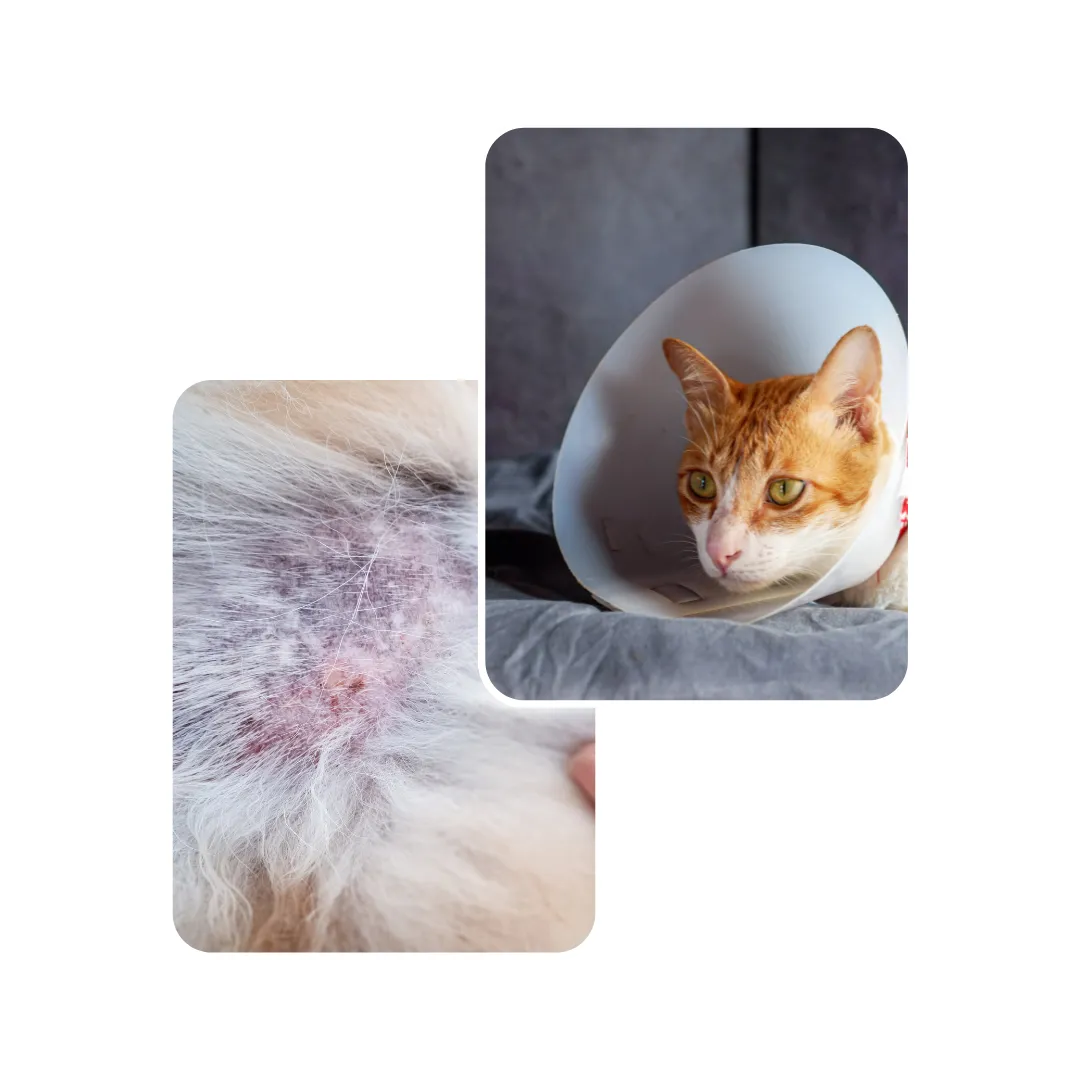
The cause of cat skin disease depends on the condition. Parasites like fleas and mites bite the skin and cause intense itching. Fungal infections such as ringworm attack the hair and skin, leading to bald patches. Food or environmental allergies can make the skin red and inflamed. Sometimes, constant scratching or licking breaks the skin, allowing bacteria to enter and cause infection. Because the causes vary, proper diagnosis is important to stop the cycle of itching and infection.

Cats with skin disease may show:
Cats with itchy or irritated skin often scratch with their paws or bite at the same spot repeatedly. Over time, this can make the skin raw or lead to open wounds.
The skin may look red, swollen or inflamed. Sores and scabs are common when cats keep scratching or biting the affected area. If untreated, these can become painful infections.
Healthy cat skin should not smell. A foul odor often means a bacterial or yeast infection that needs treatment.
You may notice areas where your cat’s fur has thinned out or fallen off. This is often caused by parasites, fungal infections like ringworm or the cat over-grooming to relieve discomfort.
Some cats develop dandruff-like flakes, while others may have greasy or oily patches. Both are signs of an underlying skin imbalance or infection.
Cats in discomfort may become irritable, hide more than usual or stop grooming themselves properly, leaving their coat looking messy or dull.
he most common ones we see are fleas, mites, fungal infections like ringworm and allergies. Each of these makes your cat itch and scratch. The tricky part is that they all look quite similar, so the safest way to know what’s really going on is with a vet check.
Yes, some of them can. Ringworm is the most common one, it can pass to people and even other pets at home. If you notice round bald patches or red skin, it’s best to treat it quickly to protect everyone in the family.
Look for red, sore or swollen areas. You might also see scabs, pus or notice a bad smell from the skin. Cats with infections often scratch or lick the same spot over and over, and the area just doesn’t seem to heal.
Bald patches usually mean there’s something irritating your cat’s skin. It could be fleas, mites, or fungal infections. Sometimes, cats also over-groom when they’re itchy or stressed. If the patches are spreading, or your cat seems uncomfortable, it’s time for a vet visit. Luckily you can visit Subang Jaya Vet great on handling this kind of problem.
Simply click the Appointment button on our website or call us directly. Online booking saves you time and ensures your cat gets.
Your pet deserves expert care – Subscribe now for trusted tips and updates from our pet experts.
